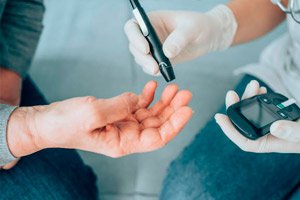
All iLive content is medically reviewed or fact checked to ensure as much factual accuracy as possible.
We have strict sourcing guidelines and only link to reputable media sites, academic research institutions and, whenever possible, medically peer reviewed studies. Note that the numbers in parentheses ([1], [2], etc.) are clickable links to these studies.
If you feel that any of our content is inaccurate, out-of-date, or otherwise questionable, please select it and press Ctrl + Enter.
Half of Diabetes Patients Unaware of Their Diagnosis: Large-Scale Study in LMICs
Last reviewed: 09.08.2025

An international team of scientists published the world's first large-scale study in Nature Communications, covering 223,283 adults (aged ≥ 25 years) from 62 low- and middle-income countries (LMICs). The scientists assessed the extent to which patients with diabetes were diagnosed and treated for the disease, as well as what kind of therapy they received.
Methodology and sampling
- Cohorts and periods: The authors selected data from nationally representative surveys from 2009 to 2019 in 62 countries, ranging from sub-Saharan Africa to Latin America and Southeast Asia.
- Diabetes diagnosis. Diabetes mellitus was defined by the level of glycated hemoglobin (HbA₁c ≥ 6.5%), fasting glucose concentration (≥ 7 mmol/L) or by a previous diagnosis.
- Therapy survey: Patients with established diabetes were asked about taking tablets (metformin, sulfonylurea, etc.) and/or insulin.
Key Results
Undiagnosed diabetes
Overall, 10.1% of participants had diabetes based on biochemical markers, but half of them (51.9%) were unaware of their disease.
Access and administration of hypoglycemics
Of the 104,776 patients aware of the diagnosis:
18.6% did not receive drug treatment;
57.3% took only oral medications;
19.5% combined tablets and insulin;
4.7% received insulin therapy only.
Country income gap
In low-income countries, diabetes was less frequently diagnosed (7.5% versus 12.3% in middle-income countries) and less frequently treated (41.2% without treatment versus 16.9%).
However, among those receiving treatment, the proportion of patients on insulin (alone or in combination) was 67% higher in the poorest countries (38.9% vs 23.2%).
Regional features
In Latin America and the Caribbean, 68.7% of treatment was pill-based, while in Oceania it was only 47.1%.
Oral medications were dominant in all regions except Rwanda and Libya, where insulin therapy was more common.
Demographic factors
The level of hypoglycemic use was not affected by gender or socioeconomic status, but patient age was a direct predictor of treatment: older groups were more likely to be on therapy.
Consequences and recommendations
Late diagnosis. Half of patients learn about diabetes too late, which leads to the risk of complications - retinopathy, nephropathy, angiopathy.
Insulin shortage. Despite the high demand, insulin remains poorly available: pharmacies often do not stock it, and families in the poorest LMICs experience “catastrophic” costs when trying to buy the drug.
Political measures. The authors call for:
Strengthen diabetes screening (available HbA₁c or fasting glucose tests) in primary care.
Optimize procurement and logistics of hypoglycemic drugs, ensuring stocks and affordability.
Integrate drug use data into national health plans to accurately forecast needs and expenditures.
“Our study provides a basis for developing effective strategies to provide medicines and reduce global gaps in diabetes care,” the authors note. They emphasize that without a systematic approach, many millions of patients in LMICs will continue to live with undiagnosed or untreated diabetes, facing severe complications and reduced quality of life.
